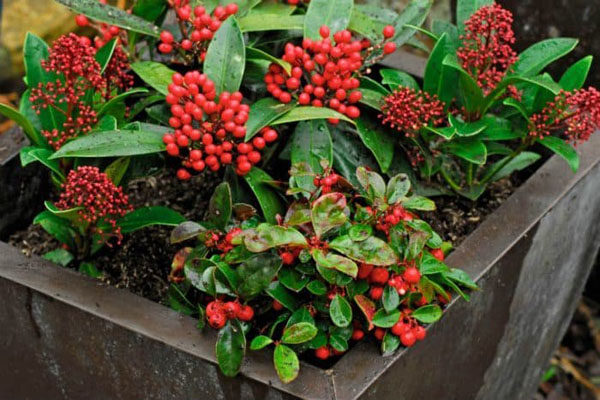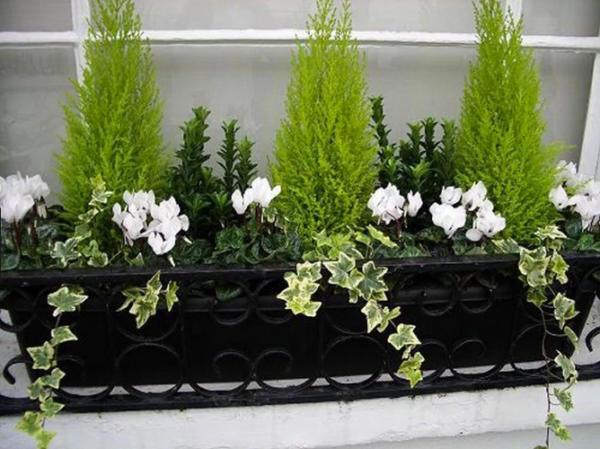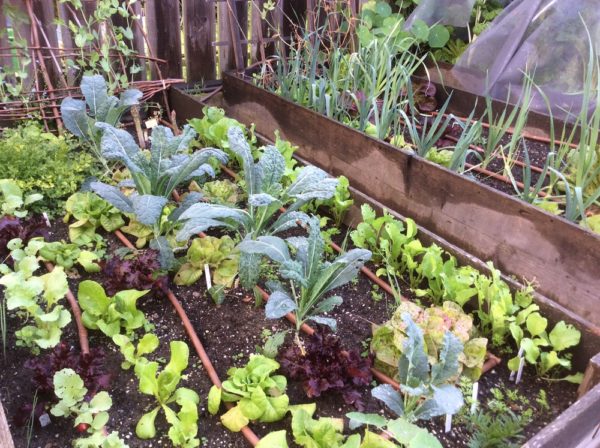
The frost and the ice traditionally bring an end to the bounty of fresh, local produce, relegating fresh veggies to a benefit of warm-to-hot weather alone. Traditionally, that’s true; however, year-round gardening can be achieved here.
With this being the month of gift giving, let me plant some ideas of how to help your favorite gardener achieve year-round gardening.
My focus is on edible production in a minimum space. Books have been written on any one of these suggested techniques, so consider these suggestions as a seed in germination.
Techniques to consider:
– There are countertop gardening boxes with a grow medium and grow lights. Look up hydroponic.
– There is the use of a functioning fish tank as the nutrient source for vegetable roots, also under a grow light. Look up aquaponics.
– A hoop house over cool-season vegetables will extend pick time and allow some to survive the winter for an early spring crop. They would already be in the ground now.
– Protecting root crops, like carrots, from freezing by liberally applying straw on their bed. They would now be ready for picking.
– Position hugelkultur beds to receive maximum sun for cool season plants. Place the mounds closely together. Heat from decomposition within the mound and the proximity to each other allow fresh vegetables through cold weather.
– Containers for inside/outside use.
There are a lot of possible gifts within these suggestions, whether the gift is bought or personally made: lights, containers, trays, hoop house construction, mound building . . .
Why container gardening? The obvious answer is space, making it a viable option for winter vegetables or for year-round apartment or townhouse residents with little space of their own. However, there are homeowners with garden space who also use container gardening. Why? Flexibility. Control. As the season gets colder or hotter, plants in containers can be moved into sheltered places to allow a longer, productive cycle. As an interesting visual focus, containers can be arranged as a presented display, especially used near seating areas as a prettiness factor.

Containers will need either a minimum of six hours of sunlight each day or to be supplemented with a grow light.
Containers do not have to be fancy: think reuse. Consider plastic buckets, coffee cans, wooden boxes, wire baskets or milk cartons for an alternative to a garden pot. Stay away from pressure-treated lumber to avoid arsenic leaching into the growth medium. Drainage holes should be on the side, not the bottom, of the container. Drill quarter-inch holes every four to five inches for drainage.
You can make your own soil from peat moss, sand and garden soil mixed together in equal amounts. To ensure weed-free, insect-free and disease-free soil, bake the damp mixture in a shallow pan in a low oven until the center maintains a 180-degree temperature for 30 minutes. I would have to toss any worms into the yard or compost pile before baking. Another option with container gardening is to use a pre-made mixture of horticultural vermiculite, peat moss and fertilizer that comes sterilized. Leave two to three inches at the top of the container for water. Remember to water the containers regularly, as they dry out faster than garden plots.
Containers can be two-to-five gallons in size, depending on what you are growing and assuming you are using a soil or a soil substitute for the plant to grow in. Spinach, radishes and lettuces can all grow in a two-gallon container. A head of leaf lettuce needs six inches; pick from the outer leaves in. Spinach needs less space, radishes need little space. Many seed sources have dwarf varieties of tomatoes, peppers and eggplants. Expect one plant per five-gallon container.

If you wanted to try outdoor containers now, the seeds would still need to be started indoors and when they were moved out, the area would have to be very protected. You don’t have to wait until spring to have fresh vegetables from your efforts. Your garden location might have just changed for the winter. Of course, you can also grow herbs inside or in a protected outside area for winter use.
A few more gifts to consider support the pollinators, a necessary component of any successful garden. Pollinators include insects and birds. Pollinators need places to perch, eat and drink. Mason bee houses are easier than bird houses as a DIY project. What plants attract pollinators? Seeds are being sold now. Consider baths, feeders, bushes and houses. Local inventory is low at this time of year. Gift cards and pictures of the promised gift or making plans together to build the project is a gift.
It is the season of love and giving. Help your gardener give back to the earth from which we take. Humans are just one spoke in the wheel of the universe, and this holiday season is a perfect time to recognize our place in the wheel. There are scientific studies that recognize that plants respond to human acts of love, including proper care and maintenance with thought.













